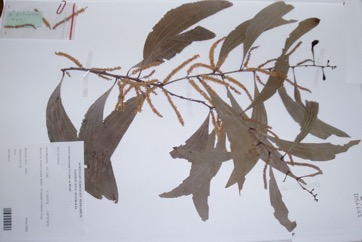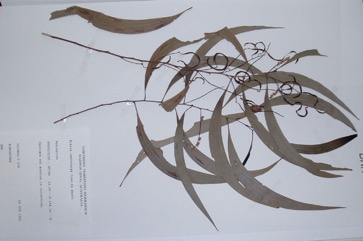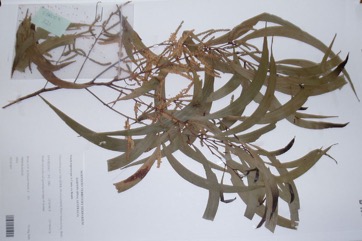North Coast Wattle

It is a tropical plant. A native plant of Australia and Papua New Guinea. It will grow on most soils. It prefers a sunny position. It is damaged by drought and frost. It is often near coasts or streams. It can be on seasonally flooded plains. In Papua New Guinea it occurs up to 30 m altitude.
Also known as:
Mangaar Mangal
Edible Portion
- Gum
Where does North Coast Wattle grow?
Found in: Australia, Indonesia, Pacific, Papua New Guinea, PNG, SE Asia
Notes: There are about 1,350 Acacia species. Over 1,000 occur in Australia. Also as Mimosaceae.
Status: The gum is used as food in Australia but it is not known if it is used for food in Papua New Guinea.
Growing North Coast Wattle
Cultivation: It is grown from seed. Seed needs treatment to break the hard seed coat. Normally this is by putting the seeds in very hot water and letting the water cool down overnight then planting the seeds immediately. Flowering is in June to September and pods form from August to October. It benefits from watering in the dry season.
Edible Uses: The gum is eaten.
Nutrition Info
per 100g edible portion| Edible Part | Energy (kcal) | Protein (g) | Iron (mg) | Vitamin A (ug) | Vitamin c (mg) | Zinc (mg) | % Water |
|---|---|---|---|---|---|---|---|
| Gum | - | - | - | - | - | - |
North Coast Wattle Photos



References
Barwick, M., 2004, Tropical and Subtropical Trees. A Worldwide Encyclopedic Guide. Thames and Hudson p 3
Bodkin, F., 1991, Encyclopedia Botanica. Cornstalk publishing, p 23
Brock, J., 1993, Native Plants of Northern Australia, Reed. p 65
Cherikoff V. & Isaacs, J., The Bush Food Handbook. How to gather, grow, process and cook Australian Wild Foods. Ti Tree Press, Australia p 198
Cooper, W. and Cooper, W., 2004, Fruits of the Australian Tropical Rainforest. Nokomis Editions, Victoria, Australia. p 303
Doran, J.C., & Turnbull, J.W. (Eds), 1997, Australian Trees and Shrubs: species for land rehabilitation and farm plantings in the tropics. ACIAR Monograph No 24. p 169
Dunlop, C.R., Leach, G.J. & Cowie, I.D., 1995, Flora of the Darwin Region. Vol 2. Northern Territory Botanical Bulletin No 20. p 13
Elliot, W.R., & Jones, D.L., 1982, Encyclopedia of Australian Plants suitable for cultivation. Vol 2. Lothian. p 75
Jackes, B.R., 2001, Plants of the Tropics. Rainforest to Heath. An Identification Guide. James Cook University. p 64
Lazarides, M. & Hince, B., 1993, Handbook of Economic Plants of Australia, CSIRO. p 4
Melzer, R. & Plumb, J., 2011, Plants of Capricornia. Belgamba, Rockhampton. p 194
Paczkowska, G . & Chapman, A.R., 2000, The Western Australian Flora. A Descriptive Catalogue. Western Australian Herbarium. p 314
Price, S.H. & J.L., Wild Food, Medicine and useful plants of the Wet tropics. Kwik Kopy, Cairns. p 2
Scarth-Johnson, V., 2000, National Treasures. Flowering Plants of Cooktown and Northern Australia. Vera Scarth-Johnson Gallery Association. Cooktown, Australia. p 72
Townsend, K., 1994, Across the Top. Gardening with Australian Plants in the tropics. Society for Growing Australian Plants, Townsville Branch Inc. p 59
Verdcourt, B., 1979, Manual of New Guinea Legumes. Botany Bulletin No 11, Division of Botany, Lae, Papua New Guinea. p 169